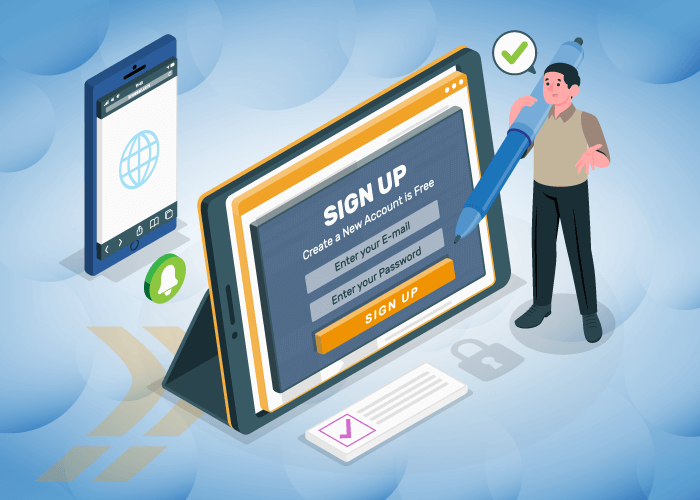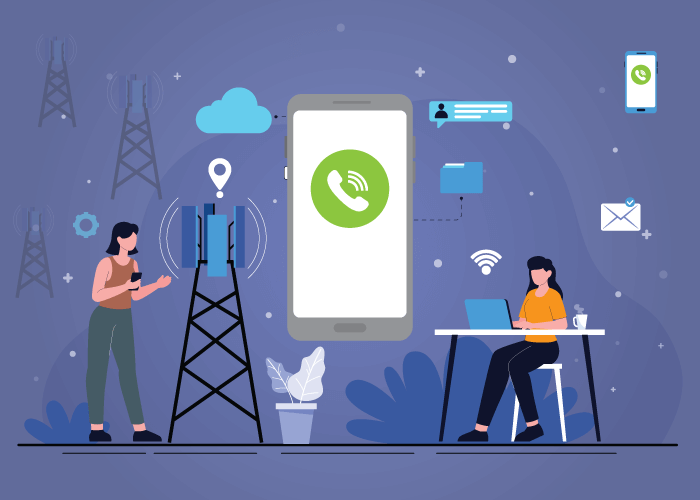So, you’ve given in to peer pressure and decided to switch to VoIP for more flexible and easy communication. But now you need help setting up your wireless VoIP phone. Global Call Forwarding makes it easy to prepare your phone for incoming and outgoing calls.
Wireless VoIP Phone Systems: Why You Need Them
A voice over internet protocol (VoIP) system allows you to make and receive calls over the internet. Because of this, you don’t need to pay traditional phone line charges or exorbitant long-distance calling fees. You only pay what you sign up for with your virtual phone service provider.
Setting up your wireless VoIP phone with Global Call Forwarding’s service is simple and easy to do. There are different applications you can use that are compatible with our service. Now, since VoIP systems work over the internet, you can use any device to make and receive your calls. For example, you can use your smartphone, laptop, iPad, tablet, or a desk phone. On our Outbound Calling instructions page, you will be prompted to choose between ‘Computer’ and ‘Phone.’ We’ll have a look at how to set up your VoIP on your smartphone.
Wireless VoIP Phone: Android and iOS
To make any of these apps work in configuration with your Global Call Forwarding service, you will need the following information: PIN number, Password, and Domain.
To locate the PIN number for your account:
- Log into the Global Call Forwarding Control Panel.
- On the left side, under Account Overview, select Outbound Calling.
- In the first column, you will see your PIN number.
- Then, on the right side, click on the Tools icon.
- A pop-up will appear. Scroll down to Password.
- Make a note of the PIN number and Password.
- The domain associated with Global Call Forwarding is mysipaccount.net.
VoIP for Android
If you want to use your VoIP service over your Android phone, select ‘Phone’ from the outbound instructions page. Then, select ‘Android’ from the next dropdown menu. Then, you will have three software/apps to choose from: Zoiper, Grandstream, and CSipSimple. You can also download any of these apps from the Play Store app. After installing any one of the apps, open it and follow the prompts. Add an account by clicking the ‘+’ button, and click on Advanced Settings, if applicable. Next, enter your PIN number (under SIP username, ID, or authentication ID). Then, enter the password and domain, and you should be all set. Once the account is registered, start making calls with your wireless VoIP phone.
VoIP for iOS
Now, if you want to use our VoIP service on your iPhone or iPad, select ‘Phone’ and then iOS (Apple) from the instructions page. You will then be able to choose from Zoiper and Acrobits. These apps can also be found in the Apple Store as well. Install any one app, open it, and follow the prompts like you would for the Android phone. Add a new account and enter your PIN number, password, and domain. This will set your iPhone as a wireless VoIP phone.
Turning Your Laptop into a Wireless VoIP Device
Global Call Forwarding also gives you the option to convert your laptop or home computer into a wireless VoIP phone. On selecting ‘Computer’ from the Outbound Calling instructions page, you can select your operating system (OS): Windows and Mac. And then, download the appropriate software on your desktop to use our service. This way, you can make and receive business calls on your laptop, while multitasking and making call notes. This is a common practice for virtual call centers. Additionally, remote employees find this useful as well, since they need just one device to get all their work and calls done.
VoIP, a Virtual Communication Solution
Having mobile VoIP gives you many additional benefits that improve your communications: good call quality, call connection, group and video chats, and call conferencing. By converting your regular phone or computer to a wireless VoIP phone, you can make calls from just about anywhere. All you need is to set the software up once and then use a good internet connection. VoIP is a convenient and dependable way to ensure you are always accessible, even during international travel. Get equipped with a virtual phone system with Global Call Forwarding today and always stay connected!










 As a call center manager, understanding attrition rates and how it may affect your business is of utmost importance. Attrition rate refers to employee turnover, that is the hiring and letting go of employees. And the call center industry outdoes other industries with one of the highest rates of employees coming and going. So, why are employees fleeing customer service and how can you, as the manager, calculate and improve attrition rates?
As a call center manager, understanding attrition rates and how it may affect your business is of utmost importance. Attrition rate refers to employee turnover, that is the hiring and letting go of employees. And the call center industry outdoes other industries with one of the highest rates of employees coming and going. So, why are employees fleeing customer service and how can you, as the manager, calculate and improve attrition rates?

